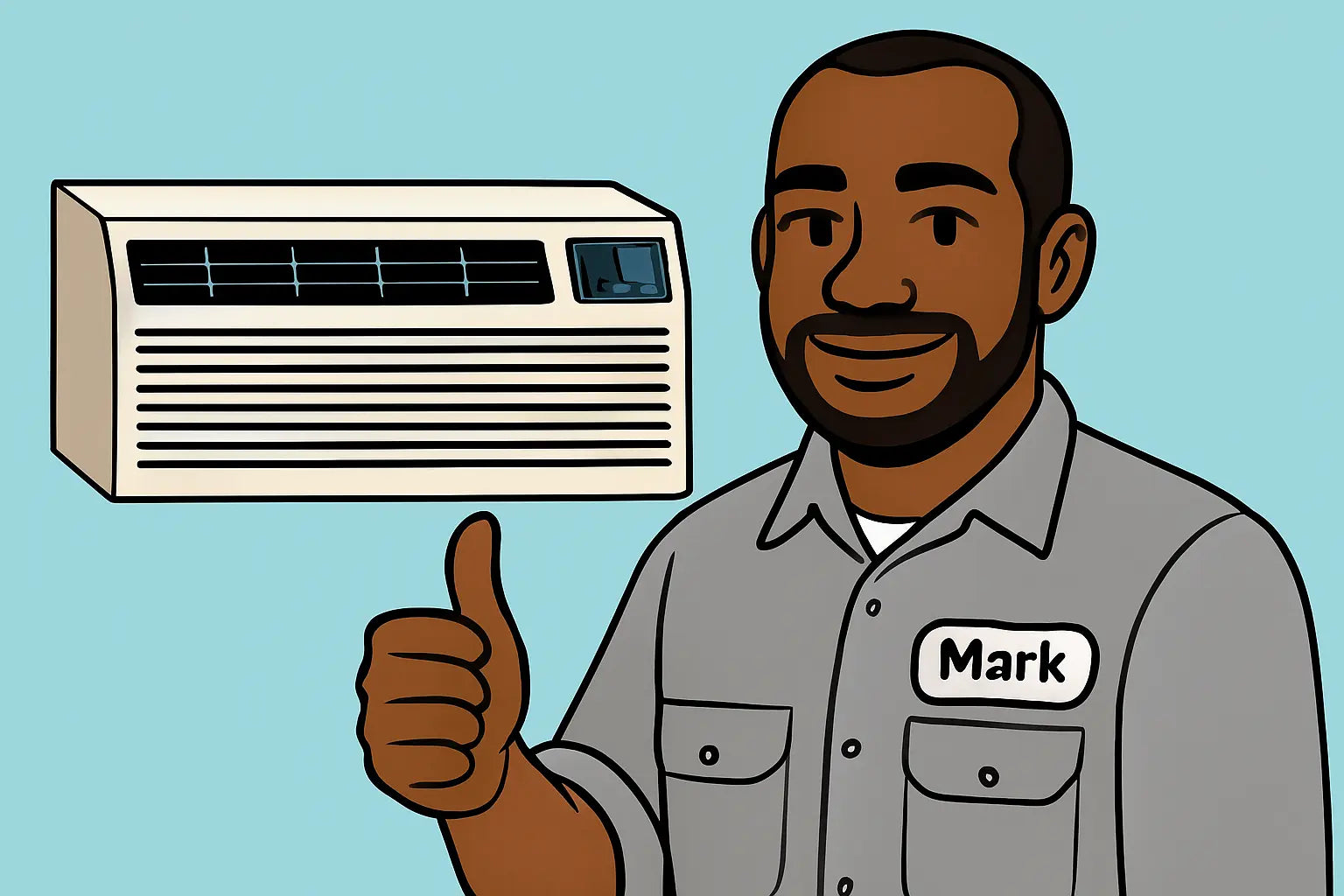Mark's Hello
Hey, it’s Mark! 🤘 So your Amana 11,800 BTU 115 V through-the-wall AC is running, but maybe it’s not performing like a champ. Weak airflow? Weird noises? Water puddles? Don’t panic—that’s what I’m here for. Today, we’re breaking down the most common issues this unit faces and giving you clear, practical fixes.
Whether you’re a seasoned DIY-er or just don’t want to call a pro every time the AC hiccups, this guide will keep you cool, calm, and in control 😎💨.
1. Weak or Inconsistent Airflow
Why It Happens
-
Dirty or clogged filters
-
Misaligned or improperly installed wall sleeve
-
Blocked airflow vents
-
Low refrigerant (requires a pro)
How to Fix It
-
Clean the filter monthly and check for dust buildup.
-
Ensure the AC is properly seated in the wall sleeve (Amana manual).
-
Remove obstructions in front of vents.
-
If airflow remains weak, it might be a refrigerant issue—time to call a licensed HVAC tech.
2. Unit Isn’t Cooling Enough
Why It Happens
-
Thermostat set too high or remote malfunctioning
-
Dirty condenser or evaporator coils
-
Oversized or undersized unit for the room (Energy Star sizing guide)
How to Fix It
-
Check thermostat settings and batteries in the remote.
-
Clean coils seasonally.
-
Confirm room size matches 11,800 BTU unit.
-
Ensure the wall sleeve is sealed properly (Energy.gov on air sealing).
3. Water Leaks or Condensation
Why It Happens
-
Wall sleeve tilt incorrect
-
Clogged drainage holes
-
Excess humidity in the room
How to Fix It
-
Check the sleeve tilt—it should lean slightly outward for drainage.
-
Clear any obstructions in the weep holes.
-
Use a dehumidifier if the room is overly humid.
-
Seal any cracks around the sleeve to prevent water ingress.
4. Strange Noises
Why It Happens
-
Loose screws or vibration
-
Fan blades hitting debris
-
Compressor or internal components aging
How to Fix It
-
Tighten all mounting screws.
-
Clean fan blades and surrounding areas.
-
If noise persists, call a professional to inspect the compressor.
-
For reference, follow the ENERGY STAR HVAC Quality Installation Guide.
5. Remote or Control Issues
Why It Happens
-
Dead batteries
-
IR sensor blocked
-
Internal unit sensor glitch
How to Fix It
-
Replace batteries and ensure they’re installed correctly.
-
Clear line-of-sight between remote and unit.
-
Power cycle the AC by unplugging it for 5 minutes.
6. Unit Doesn’t Turn On
Why It Happens
-
Tripped breaker or blown fuse
-
Loose electrical connection
-
Defective power switch or internal component
How to Fix It
-
Check the circuit breaker and outlet voltage.
-
Inspect the plug and wiring for damage.
-
If the unit still won’t power on, contact a licensed technician.
7. Regular Maintenance Tips to Avoid Issues
-
Filters: Clean monthly to maintain airflow.
-
Coils: Inspect and clean seasonally for efficiency.
-
Sleeve & Seals: Check yearly for cracks or gaps.
-
Surge Protection: Protect your unit from voltage spikes.
-
Professional Checkups: A yearly inspection ensures longevity and keeps your warranty intact.
8. When to Call the Pros
-
Persistent weak airflow or cooling issues
-
Leaks or frost on coils
-
Electrical or refrigerant problems
-
Warranty concerns or complex repairs
Some things are worth leaving to licensed HVAC pros—it can save money, stress, and your AC’s lifespan.
Outro from Mark!
Alright, crew! 🎉 You’ve officially got the lowdown on troubleshooting your Amana 11,800 BTU through-the-wall AC. From weak airflow to remote headaches, you now have the know-how to handle common problems without losing your cool 😎.
Remember, a clean filter, proper wall sleeve setup, and regular maintenance go a long way in preventing drama. If a problem is over your head—like refrigerant or internal electrical issues—don’t hesitate to call a pro.
And if you want to make sure you’re troubleshooting the right unit, here’s the exact model we’ve been covering: Amana 11,800 BTU Through-the-Wall Air Conditioner with Remote.
Want to know how to boost efficiency with this unit? Visit my guide: Chill Smarter.
Stay chill, stay smart, and keep that AC running like a boss 🤘💨.
- Mark, your go-to HVAC guide







